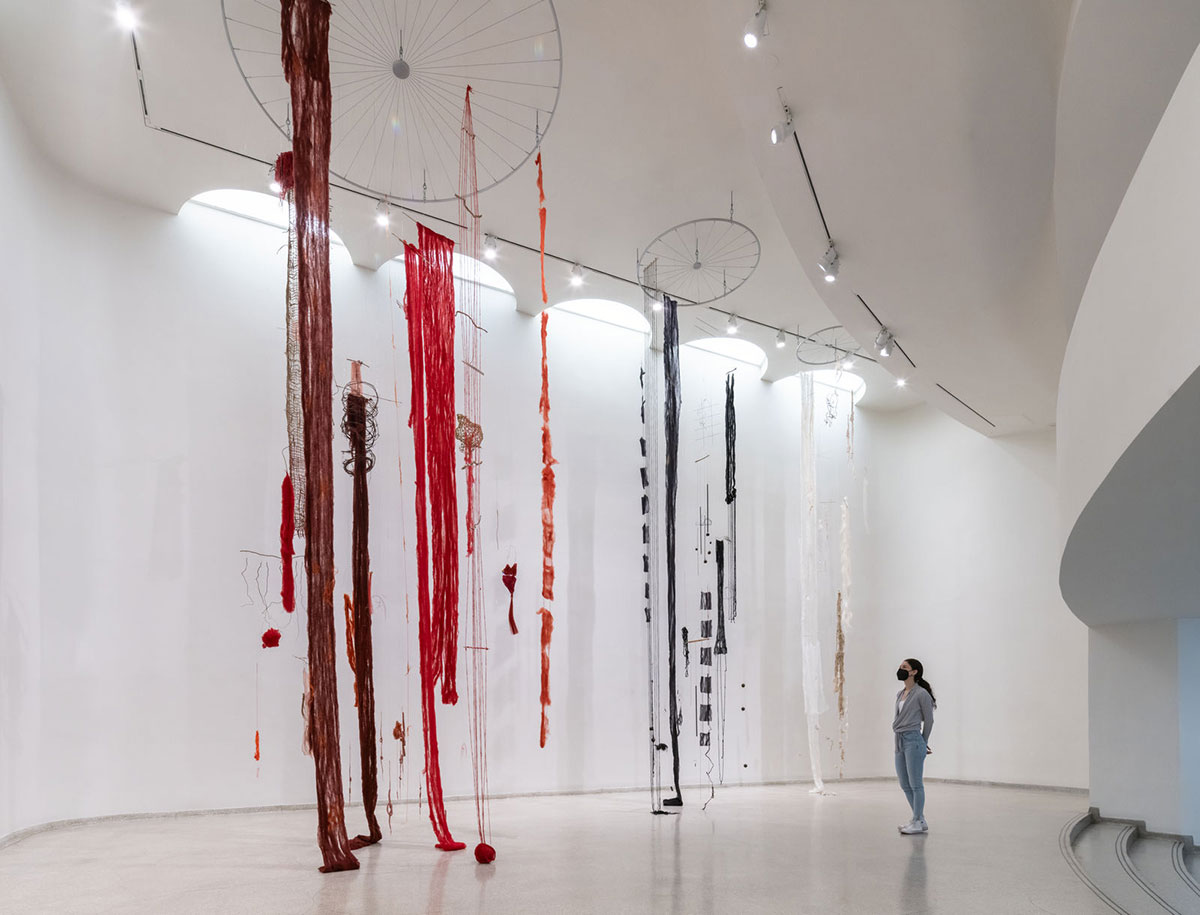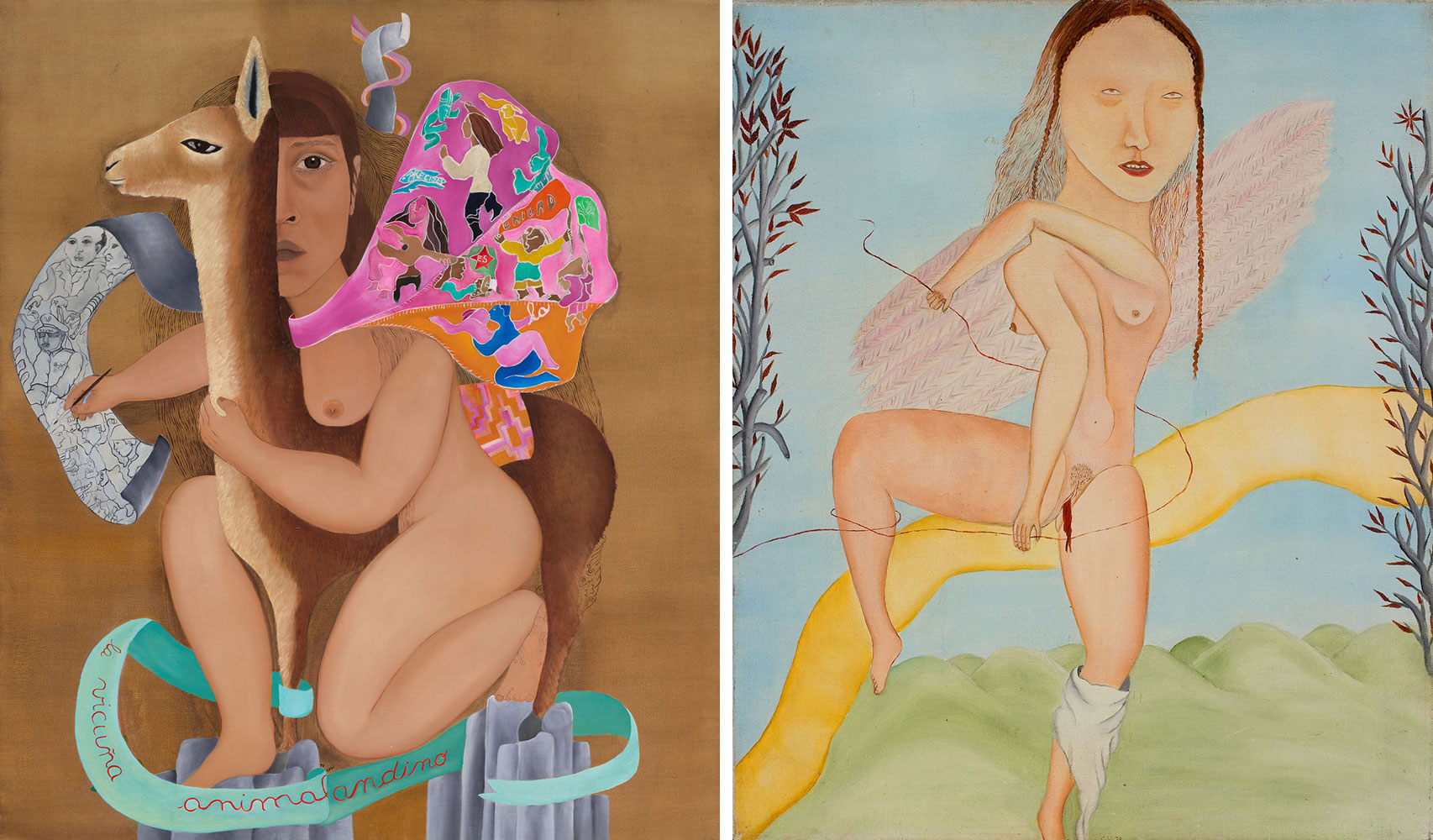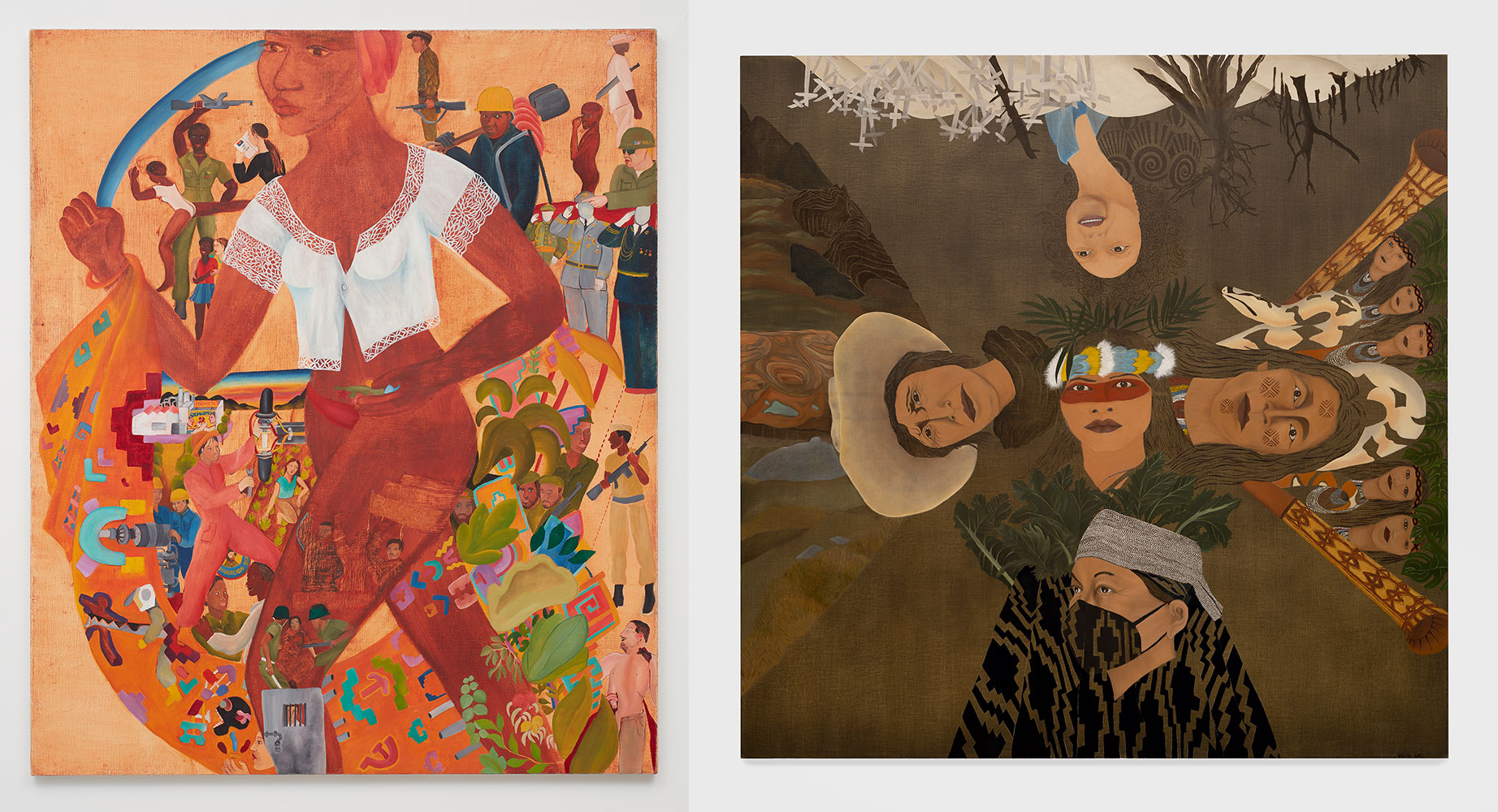PRESENTATION: Cecilia Vicuña-Spin Spin Triangulene
 Cecilia Vicuña is a poet, visual artist, filmmaker and political activist, Her multi-dimensional works begin as a poem, image, object, or line, that evolve into a film, a song, a sculpture or a collective performance. Vicuña’s impermanent, participatory works are transformative acts that bridge the gap between art and life, the ancestral and the Avant-Garde. For over three decades, she has created work that evokes the rituals and themes of ancient, pre-Columbian cultures in the context of modern world on the brink of social and ecological collapse.
Cecilia Vicuña is a poet, visual artist, filmmaker and political activist, Her multi-dimensional works begin as a poem, image, object, or line, that evolve into a film, a song, a sculpture or a collective performance. Vicuña’s impermanent, participatory works are transformative acts that bridge the gap between art and life, the ancestral and the Avant-Garde. For over three decades, she has created work that evokes the rituals and themes of ancient, pre-Columbian cultures in the context of modern world on the brink of social and ecological collapse.
By Dimitris Lempesis
Photo: Guggenheim Museum Archive
Showcasing Cecilia Vicuña’s artistic production from the late 1960s to today, the exhibition “Spin Spin Triangulene” features new works and the breadth of her multidisciplinary practice, including paintings, works on paper, textiles, films and a site-specific “Quipu” (Knot) installation, The title of the exhibition “Spin Spin Triangulene”, is a poetic creation based on new scientific discoveries the artist relates to the Guggenheim’s spiral rotunda and the quipu, to stress the connection between science and Indigenous knowledge Vicuña has observed since her early encounter with cybernetics as a young student in Chile. Long anticipated, this is the first solo exhibition of Vicuña’s work in a New York museum and brings renewed and overdue national and international attention to a pioneering contemporary Latin American artist. Vicuña explores themes of memory, language, science, and Indigenous spirituality and knowledge across her practice. Her early figurative paintings in this exhibition were conceived as a decolonizing act to subvert the oil tradition imposed on Indigenous culture by the European conquest. These works interweave her biography with the story of the rise of socialism. Following the 1973 Chilean military coup that ushered in the dictatorship of Augusto Pinochet, Vicuña exiled in London and as the political activism of her art intensified, revolutionary icons and influences—ranging from Karl Marx and Chilean folk singer and social activist Violeta Parra to Andean popular art, animism, and Indigeneity, which had long been her subjects—became poignant symbols of what was under attack. Also, on view in textiles, film, and works on paper are Vicuña’s language-based “Palabrarmas” or “word weapons,” which are politically engaged, metaphorical riddles and poems displaying her conception of language as a living entity. In the mid-1960s Vicuña began her “Quipu” series, soft sculptures made of suspended strands of knotted and unspun wool sometimes combined with found objects. The quipu (in Quechua, khipu, meaning knot) was a system of knotting colored threads to convey complex narrative and numerical information, created in the Andes in South America and later abolished by European colonizers. Vicuña reimagines her Quipus as a poetic response against cultural, ecological, and economic violence. Vicuña’s installation “Quipu del exterminio” is a new site-specific commission made of three individual quipus, each hanging from a ring of a different diameter, and using a specific color to represent different stages of existence: red being the color of blood and life; black, death; and white, mourning and resurrection. Each of the quipus are formed from various found objects, including among many other things branches and wire, wool and fibers, shells and rocks, woven nets, amulets, and amorphous objects that resemble umbilical cords or intestines dressed with cloth bandages. The objects in the quipus are in dialogue with Vicuña’s series of “Precarios, small ephemeral structures assembled from found material and which serve as sacred offerings. The different objects that compose the quipus could be understood as the remnants of life after life has been extinguished on earth. As such, Extermination Quipu is a call to action to stop the extinction of earth’s Indigenous cultures and the loss of biocultural diversity, as well as an appeal to humankind to change our destructive ways. Her self-portrait “La Vicuña” (1977) was aproduced in Bogotá. Here the artist plays with her last name, which is also the name of a wild Andean animal considered sacred by the Incas and whose wool historically was used exclusively to weave textiles for the ruling class and as offerings for the gods. In the painting Vicuña positions herself defiantly on Andean boulders, her body and that of the animal almost becoming one, relating her migrant body in exile to that of the animal. She is naked except for a scarf, half of which depicts the military dictatorship in Chile in black and white, while the other half illustrates in color the resistance to its oppression through scenes of singing, writing, activism, love, joy, and sex. This work is a call to action in response to the U.S.–supported military dictatorship of Augusto Pinochet in Chile, which lasted from 1973 to 1990, and addresses the trauma of self-exile that Vicuña experienced. At the time of the coup, the artist was studying in London and afterward was unable to return to her country. In 1973 she founded with London-based artists David Medalla and John Dugger and curator Guy Brett the collective Artists for Democracy, which organized festivals and exhibitions to support resistance to the Chilean dictatorship. Vicuña continued to engage different forms of artistic and political activism throughout her exile, in Bogotá from 1975 to 1980 and in New York City since 1980. Vicuña’s “Angel de la menstruación” (1973) is a portrait of a female angel—who might be a stand-in for Vicuña herself. who the artist imagines accompanies women during each menstrual period, from the strangeness of the first period signaling transformation from child to woman to the celebration of its monthly return. Vicuña’s angel faces front, though her body twists away from the viewer, her wings point in different directions, and her eyes roll upward as if she were in pain or entering an ecstatic state. The angel’s hairstyle, her enigmatic smile, and her placement against the landscape all recall Leonardo da Vinci’s “Mona Lisa” (1503). In Vicuña’s painting, however, the female subject is not a passive sitter, but an active presence. A red thread spirals around her body and knots around her leg. Vicuña explains, “I play with the same string that can be seen in other paintings. It is my hemp. I am part of a cosmic weaving; nothing is separate from everything else.” This red thread will appear in Vicuña’s early “Precarios” sculptures and later become the protagonist in her “Quipu” installations. On August 31, the artist will perform “Ex-termination Living Quipu” in the museum’s rotunda, a ceremony and participatory event for the healing of earth, where the public is invited to take part in a collective gesture of weaving love for land and sea.
Photo: Installation view, Cecilia Vicuña: Spin Spin Triangulene, Solomon R. Guggenheim Museum, May 27, 2022–September 5, 2022. Photo: David Heald © Solomon R. Guggenheim Foundation, 2022
Info: Curators: Pablo León de la Barra and Geaninne Gutiérrez-Guimarães, Solomon R. Guggenheim Museum, 1071 Fifth Avenue, New York, NY, USA< Duration: Dates: 27/5-5/9/2022, Mon-Fri & Sun 11:00-18:00, Sat 11:00-20:00, www.guggenheim.org/





Right: Cecilia Vicuña, Angel de la menstruación (Angel of Menstruation), 1973. Oil on canvas, 22 1/2 × 19 in. (57.1 × 48.2 cm). Collection of Catherine Petitgas, London. Photo: Courtesy the artist and Lehmann Maupin, New York, Hong Kong, Seoul, and London. © Cecilia Vicuña

Right: Cecilia Vicuña, Liderezas (Indigenous Women Leaders), 2022. Oil on canvas, 52 × 52 in. (132.1 × 132.1 cm). Courtesy the artist and Lehmann Maupin, New York, Hong Kong, Seoul, and London. © Cecilia Vicuña
